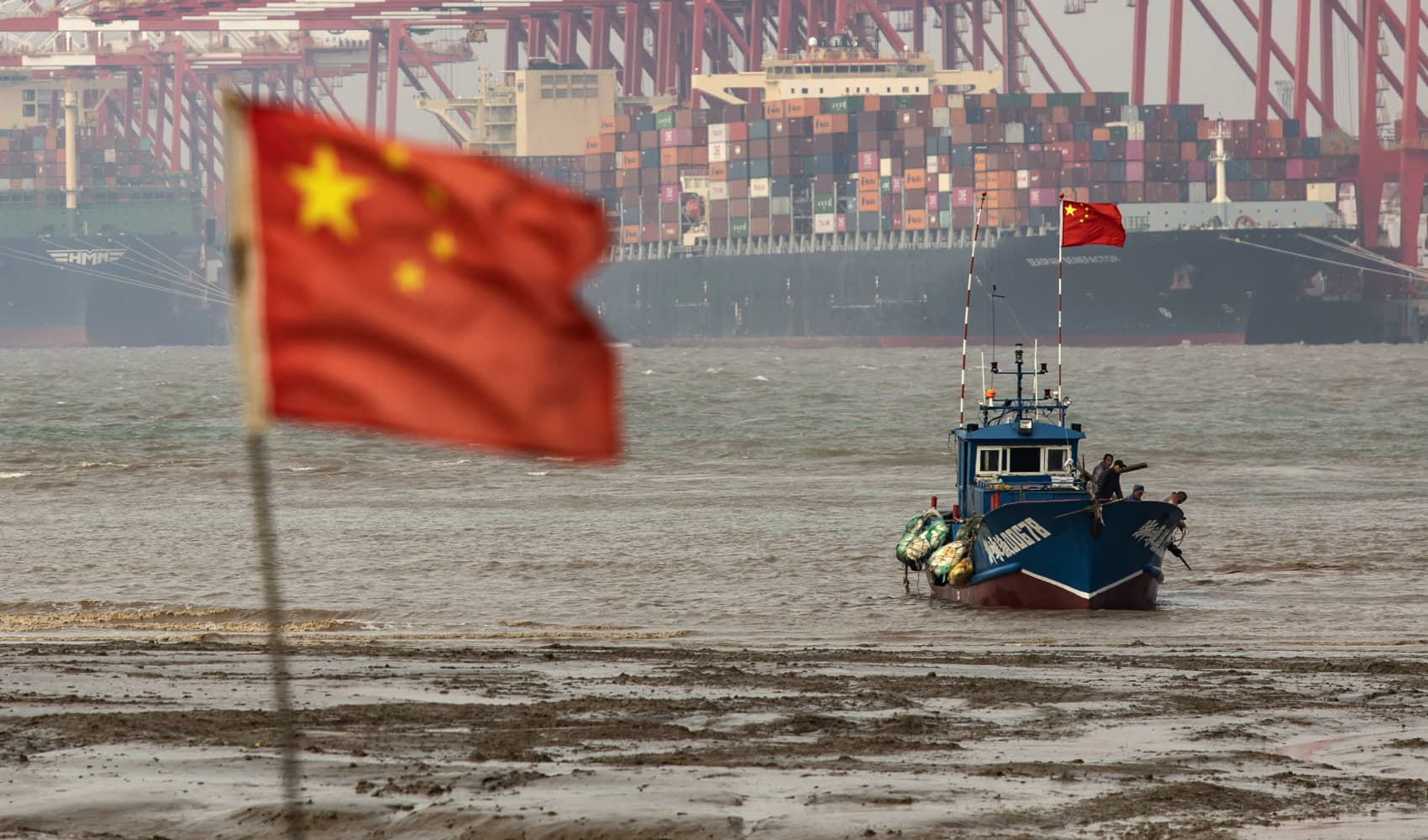Asia-Pacific Stocks Surge: Ride China's Policy Wave?
Asia-Pacific Stocks Surge: Will China's Policy Shift Fuel a Global Rally?
Introduction: A Wave of Optimism Sweeps Across Asia
Ever feel like the world's economy is a giant rollercoaster? One minute you're soaring high, the next you're plunging down a steep drop. Well, buckle up, because it looks like Asia-Pacific markets are on an upswing, at least for now. The primary catalyst? China's recent announcement of plans to ease its monetary policy. But what does this *really* mean, and how does it affect you?
China's Policy Pivot: A Lifeline for Growth?
China's central bank and financial regulators are pulling out the stops, unveiling plans to cut key interest rates. This is a significant move aimed at boosting economic growth, especially as trade tensions continue to cast a shadow. Think of it like this: imagine a plant that's not getting enough water. Cutting interest rates is like giving that plant a good dose of hydration, hopefully reviving its growth.
Interest Rate Cuts: What's the Big Deal?
Why all the fuss about interest rates? Well, lower rates make borrowing cheaper for businesses and consumers alike. This encourages investment, spending, and ultimately, economic expansion. It's like throwing gasoline on a fire... but hopefully, a controlled fire that fuels sustainable growth, not an out-of-control blaze.
Trade Worries: The Elephant in the Room
Of course, China's economic outlook isn't without its challenges. Trade worries, largely stemming from ongoing tensions with the United States and other nations, remain a significant concern. Will China's policy easing be enough to offset these headwinds? That's the million-dollar question.
Market Performance: A Snapshot of the Region
Let's dive into how the key markets across Asia-Pacific reacted to the news:
Hong Kong's Hang Seng: Riding the Wave
Hong Kong's Hang Seng index saw a notable increase, rising by 0.5%. This positive movement reflects investor confidence in China's ability to steer its economy in the right direction.
Mainland China's CSI 300: A Solid Gain
Mainland China's CSI 300 climbed by 0.61%, closing at 3,831.63. This is a reassuring sign for domestic investors and suggests that the policy changes are already having a tangible impact.
Japan's Nikkei 225: A Slight Dip
Not everyone was in the green, though. Japan's benchmark Nikkei 225 experienced a slight loss of 0.14%, closing at 36,779.66. Why the dip? Several factors could be at play, including profit-taking after recent gains and lingering concerns about the global economic outlook. But, the Topix index rose 0.31% to close at 2,696.16 so Japan is not completely losing ground.
South Korea's Kospi: A Modest Increase
South Korea's Kospi added 0.55% to close at 2,573.8. The small-cap Kosdaq, however, saw a slight decrease of 0.13%, closing at 722.81. This mixed performance highlights the complexities of the South Korean market and the varying impacts of global events on different sectors.
Australia's S&P/ASX 200: Down Under, Up in the Markets
Australia's benchmark S&P/ASX 200 climbed 0.33% to close at 8,171.3. The Australian market, with its strong ties to commodity prices and the Chinese economy, often benefits from positive developments in China.
The US-China Dialogue: A Crucial Meeting
U.S. Treasury Secretary Scott Bessent and trade representative Jamieson Greer are scheduled to meet with their Chinese counterparts this week. This meeting could be pivotal in de-escalating trade tensions and fostering a more stable economic environment. Think of it as a high-stakes poker game, where the future of global trade is on the line.
Potential Outcomes: What to Watch For
What can we expect from this meeting? Ideally, both sides will find common ground and agree to reduce tariffs and other trade barriers. However, given the complexities of the issues at hand, a breakthrough may not be immediate. Keep an eye on any announcements or statements coming out of this meeting, as they could have a significant impact on global markets.
Currency Fluctuations: The Dollar Under Pressure
Asian currencies have been strengthening against the U.S. dollar, reflecting a decline in confidence in the greenback. Why is this happening? Several factors could be contributing, including concerns about the U.S. economy, expectations of further interest rate hikes by the Federal Reserve, and the relative attractiveness of Asian assets.
Impact on Investors: What Does It Mean for You?
For investors, currency fluctuations can have a significant impact on returns. A stronger Asian currency means that investments in those markets will be worth more when converted back into U.S. dollars. On the other hand, a weaker dollar can make U.S. exports more competitive and boost the earnings of U.S. companies with international operations.
Long-Term Outlook: Navigating the Uncertainties
While the recent surge in Asia-Pacific stocks is encouraging, it's important to remember that the economic landscape remains uncertain. Trade tensions, geopolitical risks, and concerns about global growth all pose potential challenges. So, what should investors do?
Diversification: Don't Put All Your Eggs in One Basket
The key to navigating uncertain times is diversification. Don't put all your eggs in one basket. Spread your investments across different asset classes, sectors, and geographic regions. This can help to reduce risk and improve your chances of achieving your financial goals.
Stay Informed: Knowledge is Power
Stay informed about the latest economic developments and market trends. Read reputable financial news sources, consult with a financial advisor, and do your own research. The more you know, the better equipped you'll be to make informed investment decisions.
Conclusion: A Glimmer of Hope, But Caution Advised
Asia-Pacific markets have mostly climbed in response to China's policy easing, offering a glimmer of hope for global economic growth. However, challenges remain, and investors should proceed with caution. The US-China trade talks are crucial, and currency fluctuations add another layer of complexity. Diversification and staying informed are essential strategies for navigating these uncertain times. It's a complex puzzle, but understanding the pieces can help you make smart decisions.
Frequently Asked Questions (FAQs)
Here are some frequently asked questions about the Asia-Pacific markets and China's policy easing:
- Why is China easing its monetary policy now?
China is easing its monetary policy to stimulate economic growth in the face of trade tensions and other challenges. It's a proactive measure to ensure continued economic stability and expansion.
- How will the interest rate cuts affect consumers in China?
Lower interest rates will make borrowing cheaper for consumers, encouraging spending on things like homes, cars, and other big-ticket items. This boost in demand can help to stimulate the economy.
- What are the risks associated with China's policy easing?
One potential risk is inflation. If too much money is pumped into the economy, prices could rise, eroding purchasing power. Another risk is that lower interest rates could encourage excessive borrowing, leading to asset bubbles.
- How will the US-China trade talks impact global markets?
The outcome of the US-China trade talks could have a significant impact on global markets. A positive outcome, with reduced tariffs and trade barriers, would likely boost investor confidence and lead to higher stock prices. A negative outcome, with continued or escalating trade tensions, could trigger market volatility and economic uncertainty.
- Is now a good time to invest in Asia-Pacific markets?
That depends on your individual circumstances and risk tolerance. Asia-Pacific markets offer potential for growth, but they also come with risks. It's important to do your own research, consult with a financial advisor, and diversify your investments to manage risk effectively.

